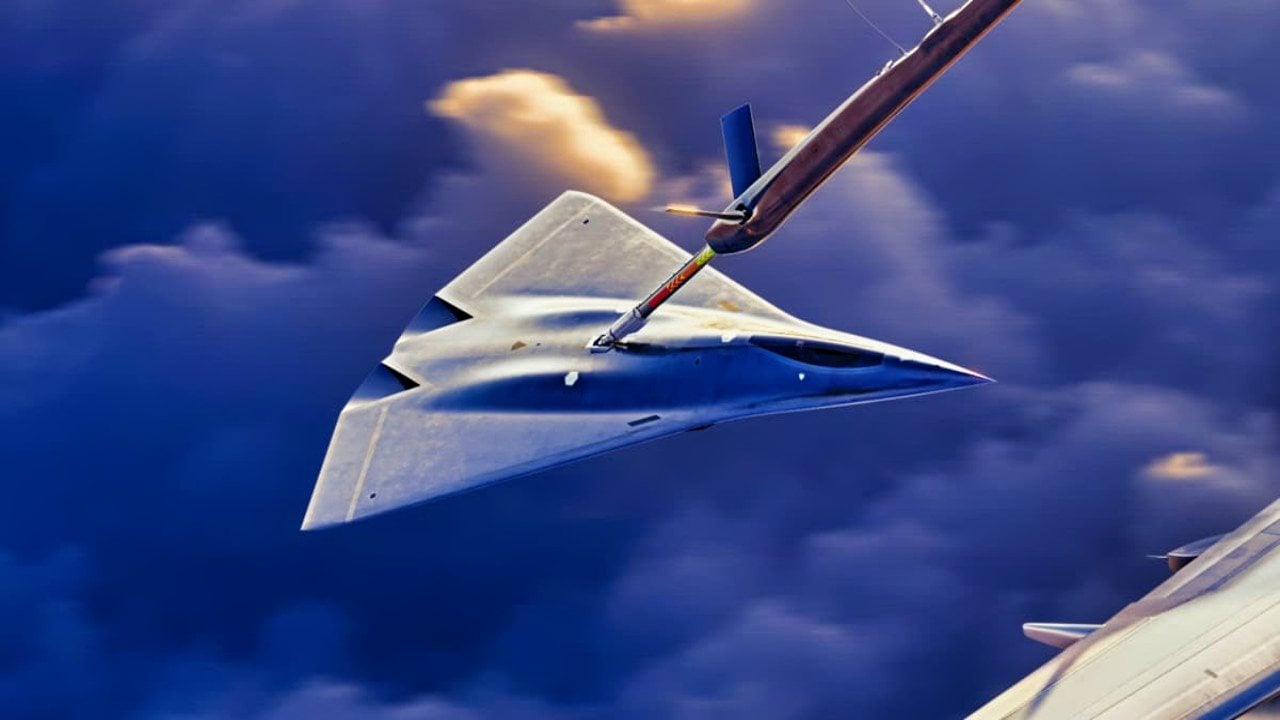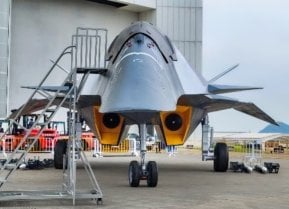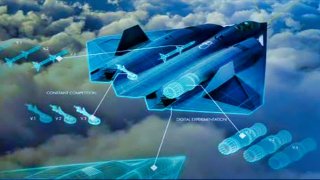X-44 Manta Stealth Fighter Explained in 3 Words
Concepts from the X-44 Manta may have influenced the U.S. Air Force's Next Generation Air Dominance (NGAD) program, which is developing a sixth-generation fighter to replace the F-22.
She Never Flew: Concepts from the X-44 Manta may have influenced the U.S. Air Force's Next Generation Air Dominance (NGAD) program, which is developing a sixth-generation fighter to replace the F-22.
-Like the X-44, the NGAD is expected to feature a tailless, wedge-shaped design and integrate advanced technologies, including unmanned "loyal wingman" drones equipped with customizable weapons and systems.
-The X-44 MANTA serves as a reminder of innovative concepts that could have accelerated modern stealth aircraft development had they been pursued further.
X-44 MANTA: The Stealth Fighter That Could Have Changed Aviation History
The F-22 Raptor entered service with the U.S. Air Force as the world’s first fifth-generation platform. In an effort to build on the stealth aircraft’s design and capabilities, manufacturer Lockheed Martin planned to develop an off-shoot. The new proposed tailless aircraft design was essentially another Raptor but designed as a stretched delta-wing mainplane.
Like the F-22, this new variant was intended to feature a twin, side-by-side turbofan engine arrangement with thrust vectoring but without the F-22’s outward vertical tail fins.
While the X-44 Manta never came to fruition, elements of the platform could live on in the service’s next-generation fighter platforms.
The History of the X-44 Manta
At the height of the Cold War, the race to develop more advanced aerial platforms was at its peak. The Air Force initiated its Advanced Tactical Fighter (ATF) program at this time to conceptualize replacement platforms for the F-15 Eagle and F-16 Fighting Falcon.
Although these jets were relatively new, analysts speculated that the Soviets’ progress in surface-to-air missile systems would soon erode their effectiveness in combat. Additionally, the USSR had introduced its Sukhoi Su-27 Flanker and Mikoyan MiG-29 Fulcrum platforms, which proved to be quite capable.
The ATF program aimed to create an air superiority platform that would remain relevant for years to come. The platform would have to incorporate new technologies, including composite materials, advanced flight control systems and avionics, and supercruise speed, among other improvements.
Introducing the F-22 Raptor Variant That Could Have Been
Lockheed’s Skunk Works division developed the YF-22 prototype in the late 1980s after teaming up with Boeing and General Dynamics. The Raptor prototype would take its maiden flight in 1990. Soon came the announcement that Pratt & Whitney and Lockheed were selected to construct the engine and airframe, respectively.
As the F-22 was under development, a heavily modified variant of the platform was conceptualized as the X-44 MANTA (Multi-Axis, No-Tail Aircraft). Derived heavily from the Raptor, the X-44 featured a reduced radar signature thanks to its tailless design and lack of vertical stabilizers. Retaining the smallest possible radar signature is essential to remaining undetected by enemy aircraft. This attribute would have been enhanced by eliminating the tail and rudder surfaces, instead using thrust vectors to provide pitch and roll control.
While these alterations could have resulted in an extremely agile airframe, it probably would have been more challenging for pilots to fly.
The X-44 was designed to be able to carry an array of powerful weapons. The aircraft was meant to feature a single 20mm internal cannon, and it would have been capable of firing two AIM-9 Sidewinder missiles. The jet could also carry up to six AIM-120 AMRAAM missiles, which could be outfitted with two 1,000-GBU-32 Joint Direct Munitions.
What replaced the X-44 Manta program?
The Manta program was nixed in 2000 before a single production prototype was ever constructed.
The Air Force is now working to develop its Next Generation Air Dominance (NGAD) fighter program over the next decade. The new aircraft is expected to replace the service’s existing fleet of F-22 Raptors, and it is possible that the X-44 was used in part to conceptualize the sixth-generation platform.
Like the X-44, the NGAD will feature a wedge-shaped, tailless design. As a family of systems, it will center on a crewed sixth-generation fighter jet accompanied by a set of “loyal wingmen drones.” These unmanned UAVs, dubbed Collective Combat Aircraft by the Air Force, will be significantly cheaper than the jets they will fly alongside. Additionally, they will be equipped with a mission-customizable array of weapons and other tactical systems.
As the race to produce the world’s first sixth-generation airframe wages on, it is worth recalling the X-44 Manta. Perhaps if Washington had allowed the X-44 program to progress years ago, the NGAD would have been an easier platform to develop.

About the Author: Maya Carlin
Maya Carlin, National Security Writer with The National Interest, is an analyst with the Center for Security Policy and a former Anna Sobol Levy Fellow at IDC Herzliya in Israel. She has by-lines in many publications, including The National Interest, Jerusalem Post, and Times of Israel. You can follow her on Twitter: @MayaCarlin.
Image: Creative Commons.


